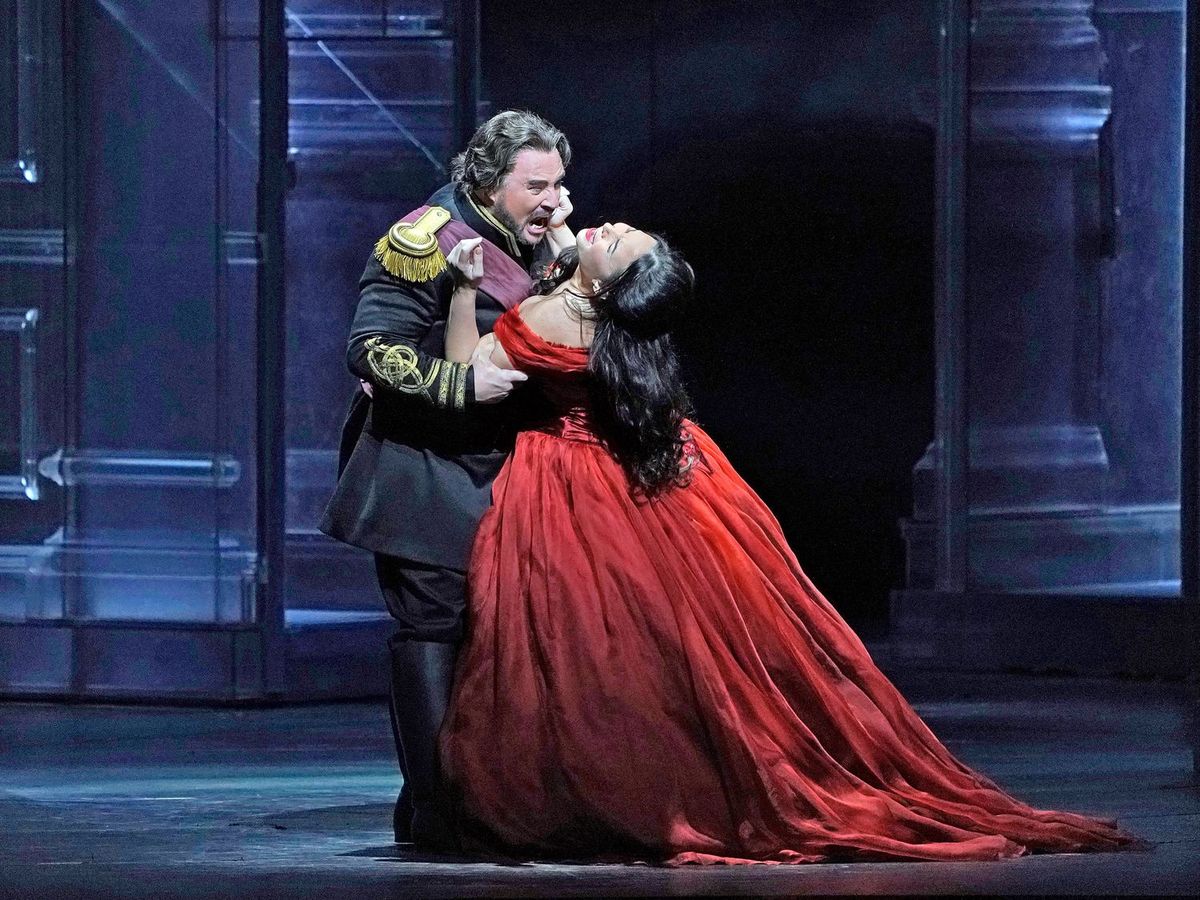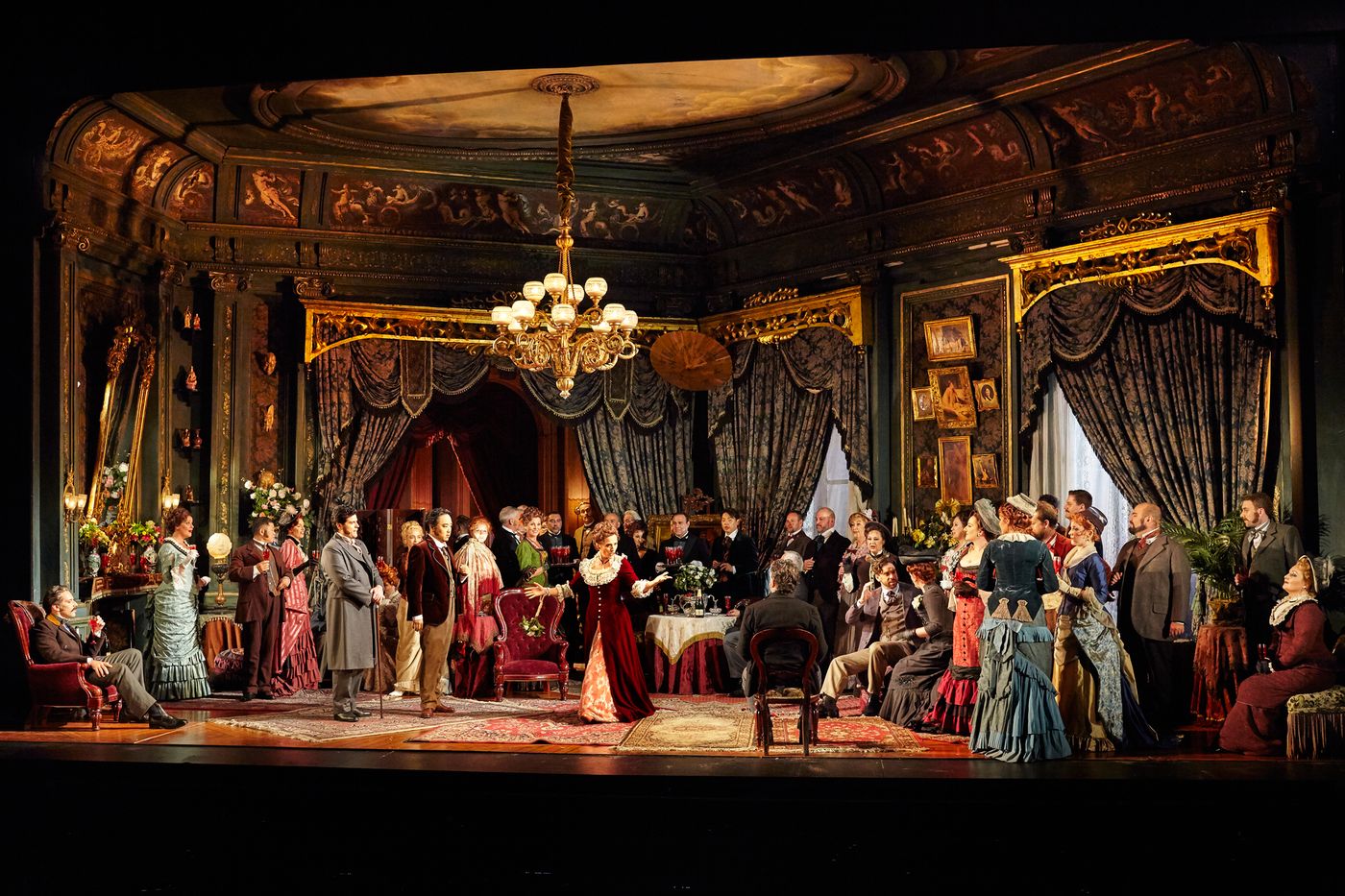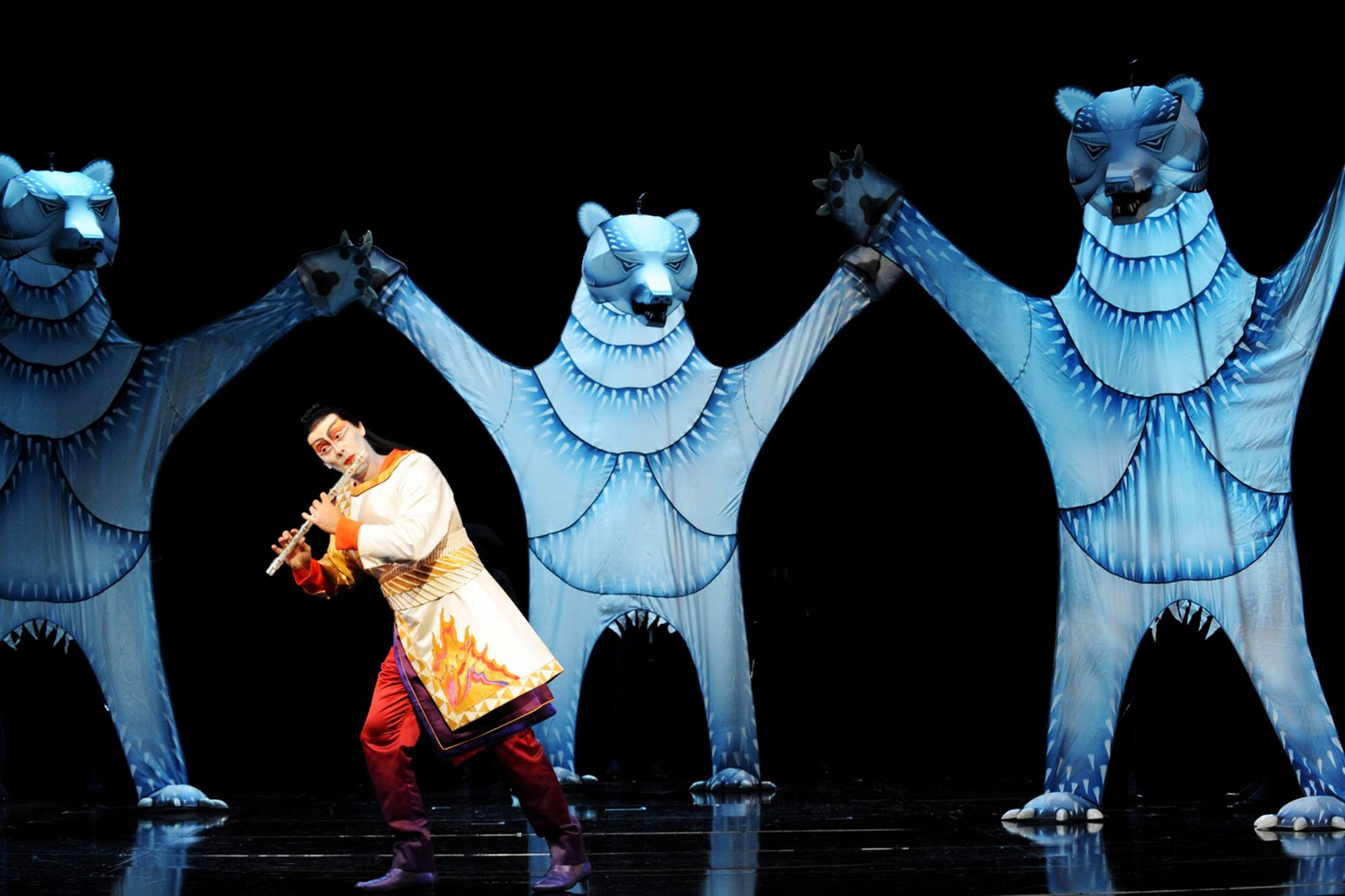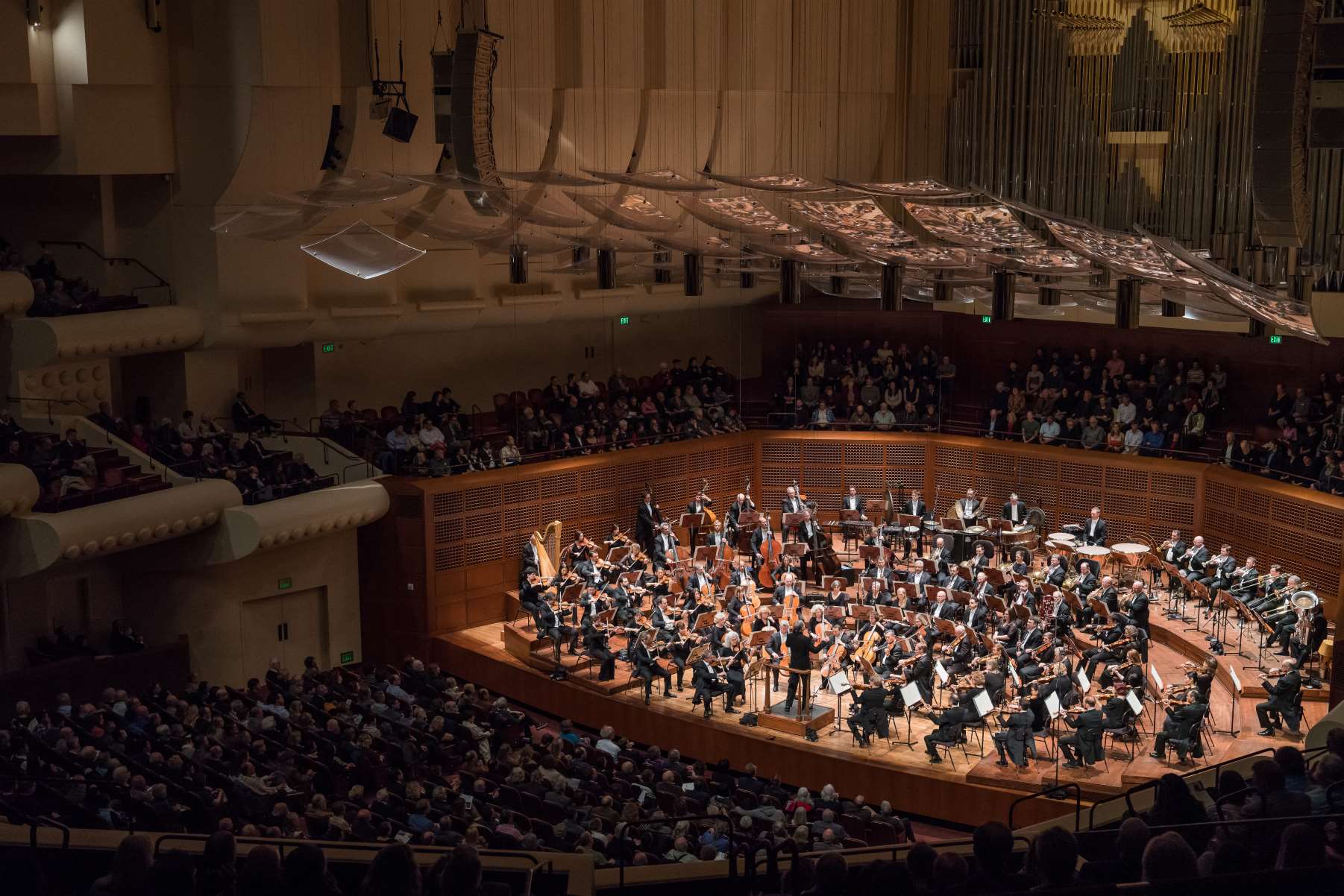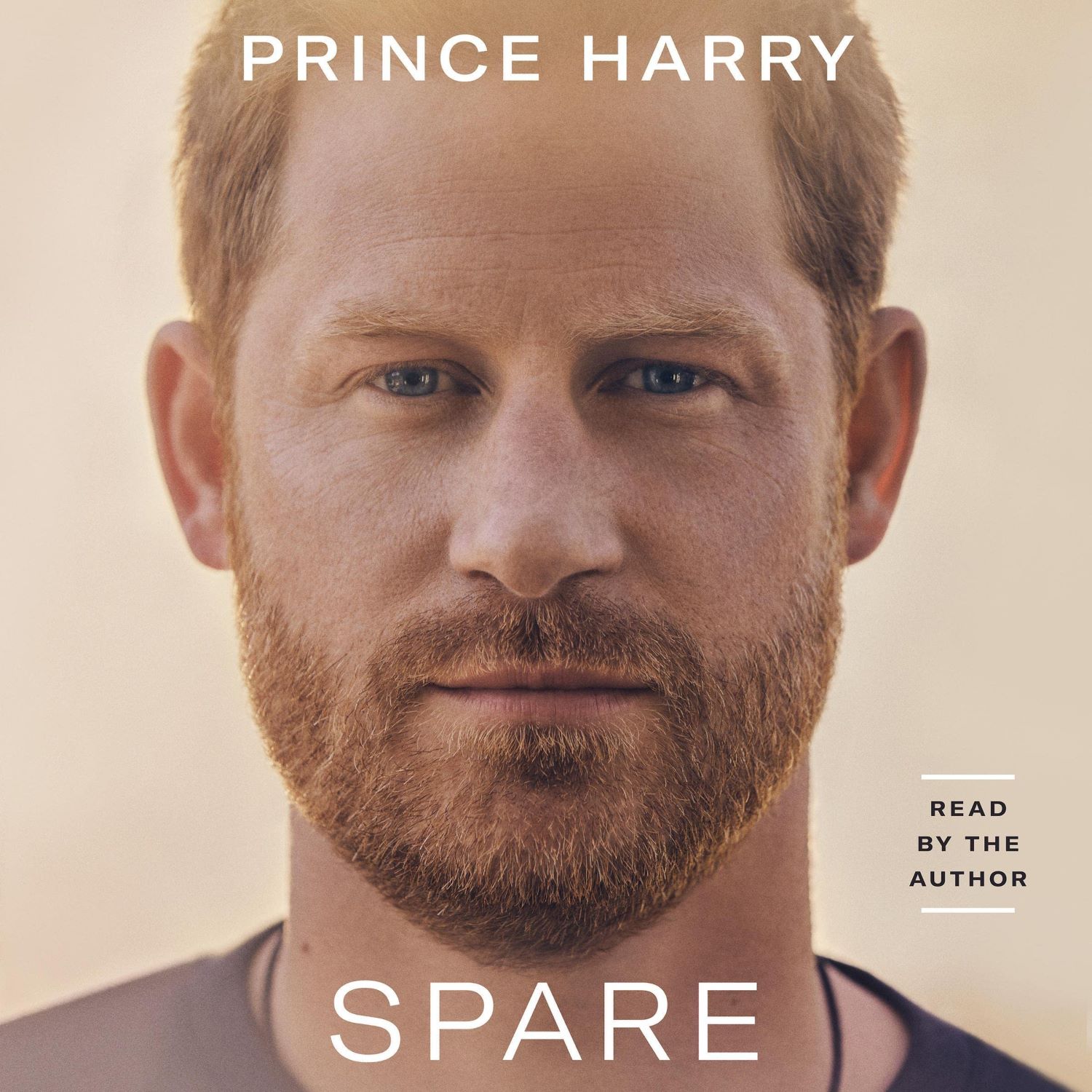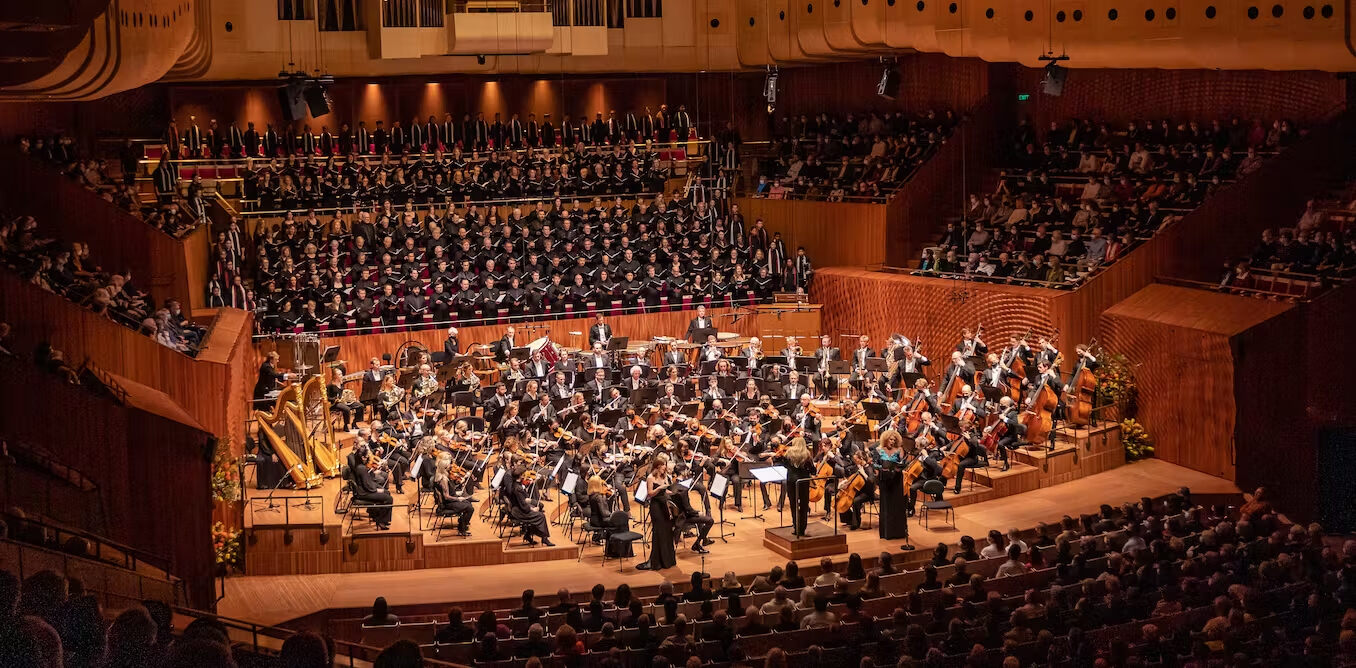Home>Events & Info>Opera>How Long Is An Opera


Opera
How Long Is An Opera
Modified: January 22, 2024
Discover the length of an opera and how it captivates audiences for hours on end. Explore the world of opera today and delve into its rich history.
(Many of the links in this article redirect to a specific reviewed product. Your purchase of these products through affiliate links helps to generate commission for AudioLover.com, at no extra cost. Learn more)
Table of Contents
Introduction
Opera is a captivating and grandiose art form that combines vocal and instrumental music with dramatic storytelling. Its origins can be traced back to the late 16th century in Italy, and it has since evolved into a diverse and revered genre with a rich history and significant cultural impact. One of the questions frequently asked by opera enthusiasts and newcomers alike is: How long is an opera?
The duration of an opera can vary widely, ranging from one hour to several hours. The length of an opera performance depends on various factors, including the specific opera being performed, the interpretation by the director and performers, and the artistic choices made by the production team. While some operas are known for their brevity, others are renowned for their epic scale and lengthy performances that span multiple acts.
In this article, we will delve into the world of opera and explore the factors that influence the length of an opera. We will also provide examples of both short and long operas, showcasing the diversity and range within this magnificent art form. So, whether you are a seasoned opera aficionado or someone curious to learn more about this captivating art form, let’s embark on a journey to discover the length and structure of operas.
Definition of an Opera
An opera is a form of musical and theatrical art that combines singing and acting, accompanied by an orchestra or instrumental ensemble. It tells a dramatic story through a combination of music, vocal performances, stage sets, costumes, and sometimes dance. Operas can be sung in numerous languages, including Italian, French, German, English, and more, depending on the country and era of composition.
At its core, opera is a collaborative art form that brings together composers, librettists (who write the texts), singers, musicians, directors, set designers, costume designers, and many others to create a cohesive and immersive theatrical experience. The libretto, or the text of the opera, typically consists of a combination of recitatives (spoken-like singing), arias (showcasing the singer’s vocal prowess), and ensemble pieces.
Operas can cover a wide range of themes and genres, including tragic love stories, historical events, supernatural tales, and even comedic plots. Through powerful music and emotionally charged performances, operas have the ability to transport audiences to different times, places, and emotional landscapes.
Opera is often associated with grandeur and spectacle, with lavish sets, elaborate costumes, and intricate staging. However, it is important to note that not all operatic productions adhere to this traditional approach. In recent years, there has been a growing trend toward innovative and minimalist productions that focus on the essence of the story and the emotional depth of the characters.
Overall, opera is a multifaceted art form that engages multiple senses and emotions. It combines music, drama, and visual elements to create a rich and immersive experience for both performers and audiences alike. With its ability to evoke powerful emotions and convey complex narratives, opera continues to captivate and inspire audiences around the world.
Historical Development of Opera
The origins of opera can be traced back to the late 16th century in Italy, where a group of intellectuals and musicians sought to revive the dramatic traditions of ancient Greece. They believed that the combination of music, poetry, and theater could create a powerful and emotionally captivating art form. This led to the birth of opera as we know it today.
The first operas were designed to imitate the structure and style of ancient Greek tragedies, with the text being sung rather than spoken. The mythological stories and themes from Greek mythology were popular choices for early operatic works. One of the earliest known operas is “Dafne” by Jacopo Peri, which was performed in Florence in 1597.
During the 17th and 18th centuries, opera spread across Europe and underwent significant developments and innovations. Composers such as Claudio Monteverdi, Henry Purcell, and Christoph Willibald Gluck played pivotal roles in shaping the emerging opera genre. They introduced new musical elements, expanded the use of choruses and ensembles, and experimented with different styles and forms.
One of the most significant developments in opera was the establishment of public opera houses. These theaters dedicated to staging operatic works allowed for more frequent performances and attracted a wider audience. The concept of opera seria, characterized by serious and heroic subjects, became popular, particularly in Italy.
However, in the late 18th century, a new genre called opera buffa emerged. Opera buffa featured more light-hearted and comedic plots, often depicting the everyday lives of ordinary people. Composers such as Gioachino Rossini and Wolfgang Amadeus Mozart excelled in this genre, injecting wit, humor, and memorable melodies into their works.
During the Romantic era in the 19th century, opera reached new heights of popularity and artistic innovation. Composers like Giuseppe Verdi and Richard Wagner pushed the boundaries of operatic conventions and explored new dramatic and musical possibilities. Verdi’s operas, known for their passionate melodies and intense emotions, became synonymous with Italian opera, while Wagner’s monumental works introduced the concept of music drama.
From the 20th century onwards, opera continued to evolve and adapt to changing cultural and artistic preferences. Composers like Benjamin Britten, Richard Strauss, and Igor Stravinsky experimented with different styles and approaches, incorporating elements of modernism and neoclassicism into their works. Today, contemporary composers continue to push the boundaries of opera, exploring new themes, theatrical techniques, and musical languages.
The historical development of opera is a testament to its enduring appeal and adaptability as an art form. From its humble beginnings in Italy to its global reach and diverse repertoire, opera has captivated audiences for centuries, offering a unique and powerful medium for storytelling and artistic expression.
Duration and Structure of Opera Performances
The duration of an opera performance can vary significantly, depending on various factors such as the specific opera being performed, the interpretation by the director and performers, and the artistic choices made by the production team. While some operas are relatively short and concise, others can be long and expansive.
Opera performances are typically structured into acts and scenes. Each act represents a distinct section of the opera’s storyline and is often separated by intermissions, allowing the audience to take a break and refresh. The number of acts in an opera can vary, with some operas consisting of only one act, while others can have three or more acts.
The length of opera acts and the overall duration of the performance can also be influenced by the inclusion of musical interludes, ballet sequences, and extended instrumental features. These elements can contribute to the overall running time of the opera.
In general, shorter operas, known as one-act operas, typically have a running time of around 60 to 90 minutes. These compact works focus on concise storytelling and often feature intense emotional narratives. One-act operas are popular choices for chamber opera productions and are ideal for venues with limited seating capacity or shorter attention spans.
Standard-length operas, which are the most common, typically have two to three acts and can have a running time of around two to three hours, including intermissions. These operas provide a more expansive storytelling experience, allowing for deeper character development and dramatic tension.
Longer operas, often referred to as grand operas or monumental operas, can have multiple acts and extended running times that can exceed four hours, sometimes even approaching or surpassing five hours. These epic productions demand significant stamina from both the performers and the audience, often requiring intricate staging, elaborate sets, and intricate musical compositions.
It’s important to note that the duration of an opera can also be influenced by the individual interpretation of the director and performers. A director may choose to shorten or lengthen certain scenes or add their own creative elements to enhance the storytelling. Additionally, the tempo at which the music is performed can affect the overall timing of the opera.
Overall, the duration and structure of opera performances can vary greatly, providing a diverse range of options for both performers and audiences. Whether it’s a compact one-act opera, a standard-length production with two or three acts, or an epic grand opera, each performance offers a unique opportunity to immerse oneself in the beauty and drama of this extraordinary art form.
Factors that Influence the Length of an Opera
The length of an opera can be influenced by several factors, which can vary from one production to another. Understanding these factors can provide insights into why certain operas may be shorter or longer in duration. Here are some key factors that influence the length of an opera:
- Composer’s Intentions: The composer’s original intentions and musical composition play a significant role in determining the length of an opera. Some composers choose to create compact and concise works, while others favor grand and sweeping epics with extensive musical and dramatic developments.
- Libretto and Text: The length and complexity of the libretto, or the text of the opera, can heavily impact the running time. Librettists may choose to adapt lengthy source materials, resulting in longer operas, or condense them, leading to shorter works.
- Director’s Interpretation: The director’s interpretation and vision for a particular production can also affect the length of an opera. They may choose to add or cut certain scenes and make artistic decisions that impact the overall duration of the performance.
- Orchestration and Musical Complexity: Operas differ in terms of musical complexity and orchestration. Some operas have elaborate and intricate musical scores that require a longer performance time, while others may have simpler arrangements that lend themselves to shorter performances.
- Additional Elements and Interludes: The inclusion of ballet sequences, extended instrumental features, or musical interludes within an opera can contribute to its overall length. These additional elements, while enhancing the artistic experience, can extend the running time.
- Conductor’s Interpretation: The conductor’s interpretation and pacing of the music can influence the duration of an opera. Different conductors may choose different tempos, resulting in variations in running time.
- Cuts and Adaptations: Productions may sometimes make cuts or adaptations to the original opera score, either for practical reasons or to suit the artistic vision. These alterations can impact the overall length of the performance.
It is worth noting that the duration of an opera is not solely determined by one factor, but rather a combination of these influences. The interplay between the composer’s intentions, the libretto, the director’s interpretation, and other elements all contribute to the final length of an opera.
Ultimately, the length of an opera is a carefully considered artistic choice, balancing storytelling, musical structure, and the overall impact on the audience. Whether a concise one-act opera or an epic masterpiece, each opera is uniquely designed to transport audiences, evoke emotions, and leave a lasting impression.
Examples of Short Operas
While operas are often associated with lengthy performances, there are many notable examples of short operas that showcase the ability to captivate audiences within a more condensed timeframe. These works demonstrate the power of concise storytelling and offer a unique experience for both performers and spectators. Here are a few examples of short operas:
- Cavalleria Rusticana by Pietro Mascagni: This one-act opera, premiered in 1890, tells a tragic tale of love, betrayal, and jealousy in a small Italian village. With a running time of around 75 minutes, “Cavalleria Rusticana” packs a powerful emotional punch and features memorable melodies, including the famous “Intermezzo.”
- Pagliacci by Ruggero Leoncavallo: Also a one-act opera, “Pagliacci” premiered in 1892 and explores themes of love, betrayal, and the tragic consequences of hidden emotions. Running for approximately 70 minutes, this opera is known for its dramatic intensity, particularly in the iconic aria “Vesti la giubba.”
- L’Enfant et les Sortilèges by Maurice Ravel: This one-act opera, composed in 1925, offers a charming and whimsical story of a mischievous child and the lessons learned through encounters with anthropomorphic furniture and animals. With a duration of about 45 minutes, “L’Enfant et les Sortilèges” showcases Ravel’s masterful orchestration and inventive melodies.
- La Voix Humaine by Francis Poulenc: Based on a play by Jean Cocteau, this monodrama explores the emotional turmoil of a woman during a phone conversation with her lover. Lasting around 40 minutes, “La Voix Humaine” is a tour de force for a solo soprano, capturing the anguish, vulnerability, and longing of the central character.
- The Telephone (L’Amour à Trois) by Gian Carlo Menotti: With a running time of approximately 30 minutes, “The Telephone” is a delightful comic opera that revolves around a young woman’s obsession with her telephone and its impact on her relationship with her beau. Premiered in 1947, this lighthearted work is known for its catchy tunes and humorous storyline.
These examples demonstrate the ability of short operas to deliver a powerful narrative or emotional experience within a more concise timeframe. While they may be shorter in duration compared to other operas, their impact and artistic value are undeniable.
Short operas offer a wonderful opportunity to explore the world of opera for those who may be new to the art form or prefer a more compact and focused experience. Despite their brevity, they can still convey profound emotions, explore complex themes, and showcase the talent and creativity of composers, librettists, and performers.
Whether it’s the passionate drama of “Cavalleria Rusticana” or the whimsical charm of “L’Enfant et les Sortilèges,” short operas offer a captivating and accessible entry point into the world of opera, proving that great art can come in small packages.
Examples of Long Operas
While short operas can deliver powerful experiences within a condensed timeframe, there is a subset of operas that are known for their epic scale and lengthy performances. These long operas, often spanning multiple acts and hours, allow for more intricate storytelling, expansive musical compositions, and immersive theatrical experiences. Here are a few examples of notable long operas:
- Der Ring des Nibelungen by Richard Wagner: Composed between 1848 and 1874, “Der Ring des Nibelungen,” also known as “The Ring Cycle,” is a monumental four-opera cycle that explores Norse mythology and human themes. With a total running time ranging from 15 to 18 hours, this epic work delves into love, betrayal, greed, and the quest for power.
- Les Troyens by Hector Berlioz: Premiered in 1863, “Les Troyens” is an epic five-act opera based on Virgil’s “Aeneid.” With a running time of approximately four to five hours, this grand opera depicts the fall of Troy and the subsequent adventures of Aeneas. It showcases Berlioz’s rich orchestration, powerful choruses, and lyrical solos.
- Die Meistersinger von Nürnberg by Richard Wagner: This comedic opera, premiered in 1868, clocks in at around four and a half to five hours. Set in 16th-century Nuremberg, it delves into the world of the master singers’ guild and explores themes of art, tradition, and love. The opera features complex choral sections, elaborate ensemble pieces, and lyrical solos.
- Parsifal by Richard Wagner: Another magnum opus by Wagner, “Parsifal” premiered in 1882 and has a running time of approximately four and a half hours. A mystical and philosophical opera, it tells the story of the young Parsifal and his quest for the Holy Grail. “Parsifal” is renowned for its transcendent music, powerful choruses, and profound spiritual themes.
- Einstein on the Beach by Philip Glass: Composed in collaboration with Robert Wilson, “Einstein on the Beach” is a groundbreaking opera that challenges traditional narrative structure. Premiered in 1976, this opera has a running time of around four and a half hours with no intermission. It is an abstract and immersive experience that explores themes of science, art, and time.
These examples showcase the grandeur and artistic ambition of long operas. Through their extended durations, they provide an opportunity for deep immersion in the narrative, the exploration of complex themes, and the appreciation of rich musical compositions.
Long operas require stamina and commitment from performers and audiences alike. However, the reward is an unforgettable and transformative experience that transports listeners to imaginative worlds, evokes profound emotions, and offers moments of transcendent beauty.
While the length of these operas may seem daunting, their impact and artistic value make them cherished works within the operatic repertoire. Whether it’s the Wagnerian drama of “Der Ring des Nibelungen” or the philosophical musings of “Einstein on the Beach,” long operas showcase the boundless possibilities of the art form and continue to captivate and inspire audiences worldwide.
Conclusion
Operas come in various lengths, ranging from short and compact works to epic masterpieces. The duration of an opera is influenced by a variety of factors, including the composer’s intentions, the libretto, the director’s interpretation, and additional elements such as interludes and musical complexity. Short operas, such as “Cavalleria Rusticana” and “The Telephone,” prove that powerful storytelling can be achieved within a concise timeframe. On the other hand, long operas like “Der Ring des Nibelungen” and “Les Troyens” offer immersive experiences that allow for intricate narratives and grand musical compositions.
Despite their differences in length, both short and long operas possess the power to transport audiences to different worlds, elicit strong emotions, and provide a unique blend of music and theater. Short operas capture the essence of a story succinctly, while long operas create grand spectacles that delve deep into complex themes.
Opera, as an art form, has evolved over centuries and continues to do so with contemporary compositions pushing the boundaries of convention. Whether it is a one-act opera or an extensive opera cycle, each performance offers a captivating and transformative experience that can leave a lasting impact.
Regardless of the length of an opera, what truly matters is the emotional connection it establishes with the audience. Every opera, short or long, has the potential to inspire, enlighten, and entertain. It is through the captivating combination of music, drama, and storytelling that opera continues to captivate the hearts and minds of people around the world.
So, whether you’re drawn to the brevity of a short opera or enticed by the epic scale of a long opera, embrace the opportunity to engage with this magnificent art form and let yourself be immersed in the beauty, passion, and creativity that opera offers.

